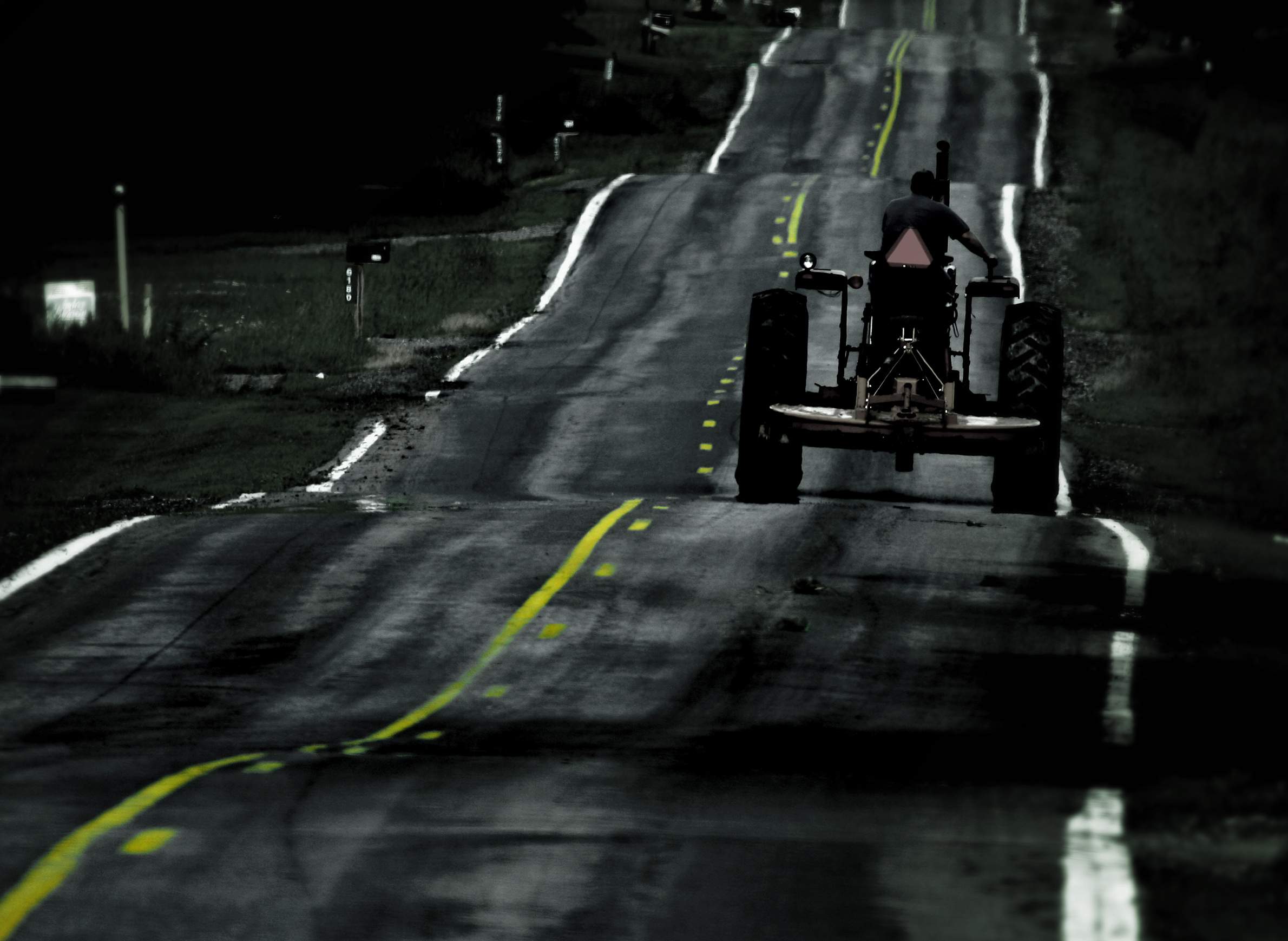
The slow speed and handling of farm vehicles mean drivers of conventional cars and trucks need to take extra caution.

The slow speed and handling of farm vehicles mean drivers of conventional cars and trucks need to take extra caution.
Fall harvest season is underway throughout Wisconsin and will continue for the next couple of months, which means farmers and other drivers will be sharing roadways more frequently.
Driving farm machinery on public roads is legal — and is often the only way farmers can get from field to field. The combination of slow-traveling farm equipment and a faster motor vehicle means the time before the two meet can be seconds.
Collisions between motor vehicles and farm implements usually occur in one of two scenarios. The first involves the farm implement making a left-hand turn as the other driver moves to pass the implement. The second common crash involves the motor vehicle rear-ending the farm implement.
The most important thing for people who drive conventional cars and trucks to keep in mind is farm equipment is not very maneuverable. Farm implements don't behave like cars and pick-up trucks when it comes to speed, turning or braking. Their size makes it hard to move over quickly, and they take longer to turn into driveways or intersections. Because of the equipment’s design, the operator has a hard time seeing other vehicles that are following or passing the farm implement.
The speed difference between a farm implement and a motor vehicle is a key factor in crashes. Most farm equipment operates at less than 25 miles per hour. A motor vehicle coming up behind a farm implement has only seconds to brake and avoid a collision. Any type of distracted driving — talking on cell phone, checking a text message or being tired — can make stopping before a collision almost impossible.
Slower speeds mean that drivers are going to be tempted to pass farm implements. Passing a farm implement or an agricultural commercial motor vehicle in a no-passing zone is illegal. A driver getting ready to pass always has the responsibility to make sure that there’s a safe passing distance; making the decision to pass is difficult with farm implements. When passing in a rural area, drivers should look ahead for other vehicles but also for driveways into farms or fields, intersections and road structures that may be where the farm implement operator is headed, prompting her or him to change road position. Also, farm implements may be in unexpected places because farmers often use local streets or highways to transport grain to storage facilities.
Heavy rains earlier this year have damaged roadways and road shoulders throughout Wisconsin. Farm equipment may need to travel more on the roadway because washed-out shoulders and wet ditches can cause machinery to overturn. While farm equipment operators are required to share the road and operate on their half of the roadway when meeting oncoming traffic, oncoming motorists can make passing safer by slowing down or giving the farm machinery a chance to move over.
Wet field conditions also mean that truck tractors and trailers (semi-trucks) used for hauling grains from field may park on the right-of-way.
Here are some tips and reminders for motorists during the fall harvest season:
Cheryl Skjolaas is a University of Wisconsin-Extension agricultural safety and health specialist with the UW Center for Agricultural Safety and Health, which publishes information on rules of the road for implements of husbandry.